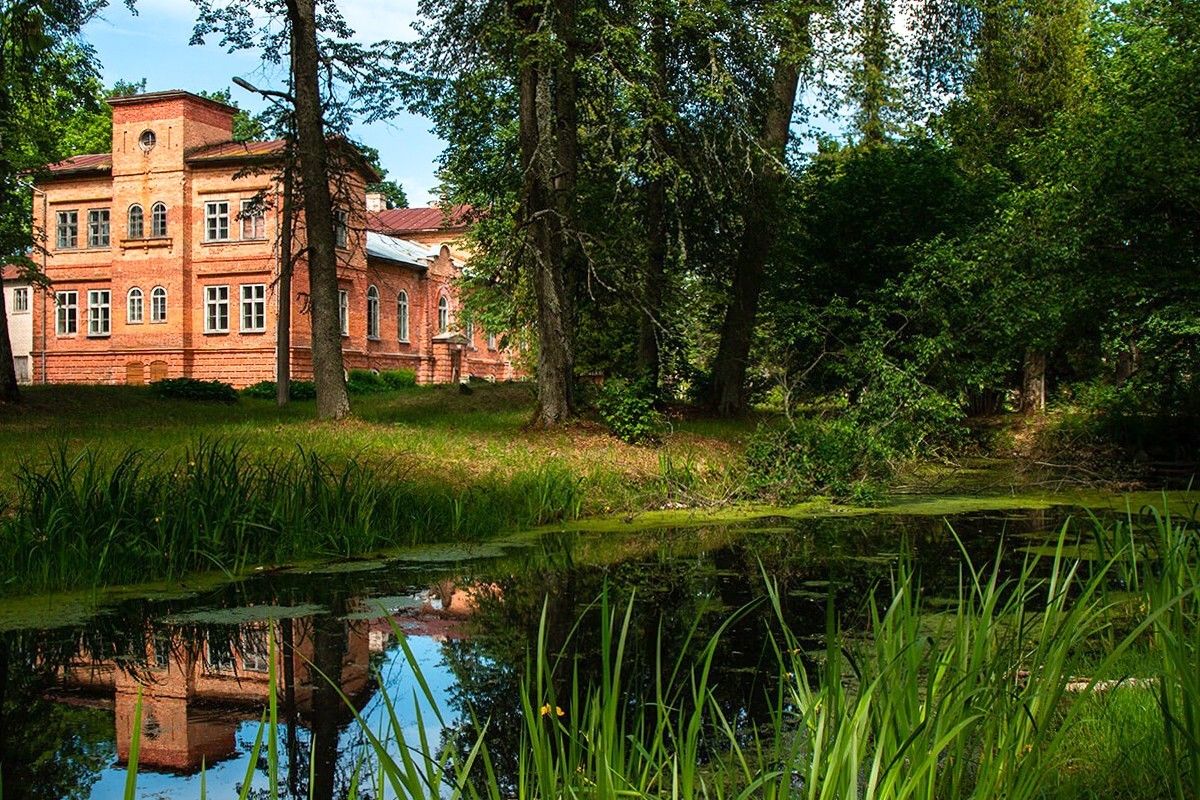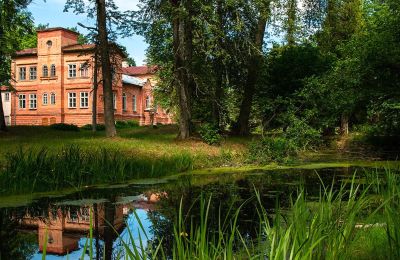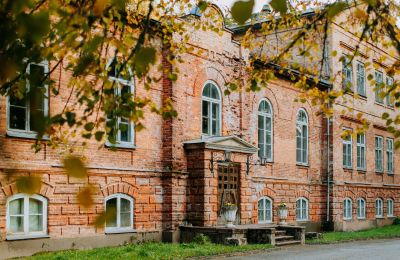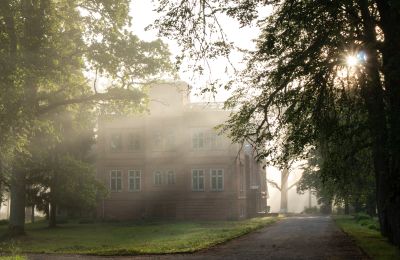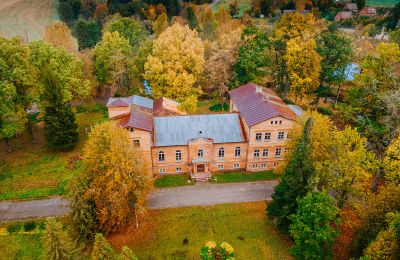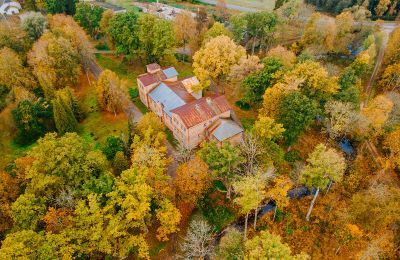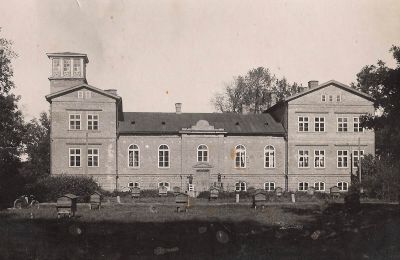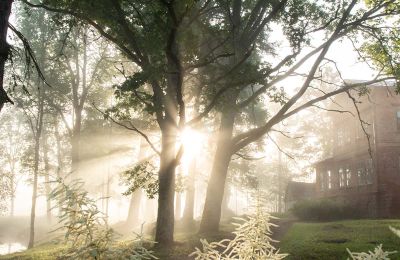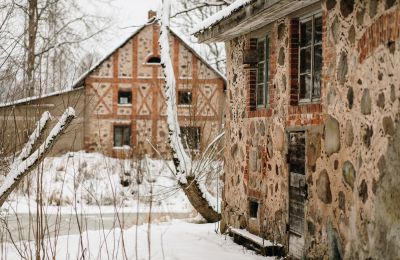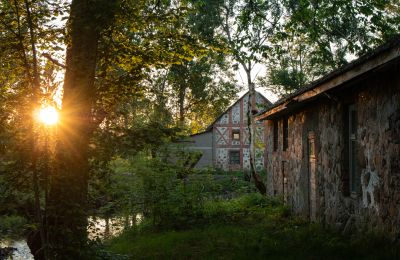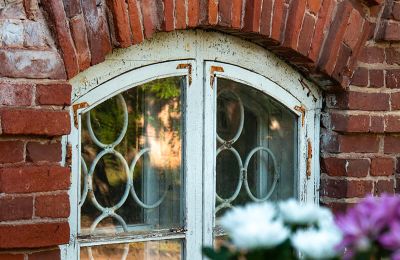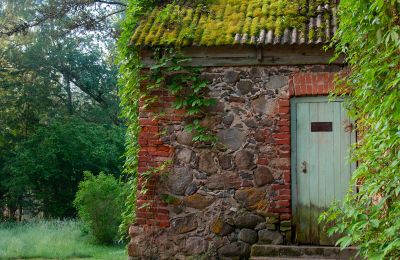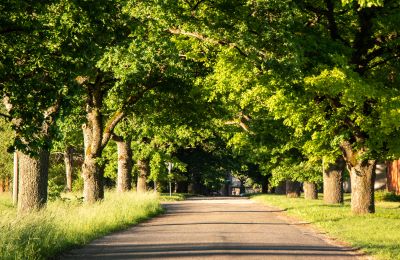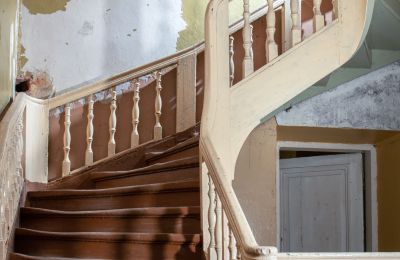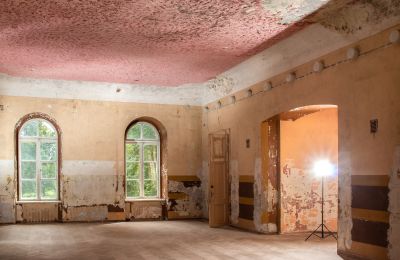This magnificent estate, set on a hill surrounded by forests, offers a tranquil retreat in northern Latvia. The property boasts a beautiful 150-year-old park with a variety of mature trees, including oak, ash, larch, white spruce, pine, birch, maple, lime, and aspen. Whether you're looking for a peaceful getaway or a venue for a special occasion, Virkenu Manor provides the perfect setting for memorable moments.
The estate covers an area of 27.01 hectares (270,100 m²) and includes six buildings:
- The Lords House (built in 1895) with a total area of 1,275 m²
- The Servant's House (built in 1860) with a total area of 462 m²
- The Smithy (built in 1860) with a total area of 115 m²
- The Outbuilding (built in 1883) with a total area of 419 m²
- The Large Cattle Barn (built in 1860) with a total area of 999 m²
- The Brewhouse (built in 1860) with a total area of 252 m²
History of Virkeni Manor
Historical Names: Wirken, Wirkken, Würken, Würkenhoff. Established in 1520.
The 16th Century
In 1520, under the orders of Wolter von Plettenberg, the Livonian Order master, several land parcels were leased to Kuddelen, who combined them to create the manor. The manor was later owned by the von Dönhoff family, a prominent Baltic German family. Gerard von Dönhoff, the governor of Tartu in 1598, and his sons, Caspar and Ernst Magnus von Dönhoff, held significant positions in Tartu and Sieradza.
The 17th Century
In 1690, the manor was seized by Swedish King Karl XI but was soon returned. During the Swedish reign (1629-1721), the manor belonged to the Engelhardt family. The first owner, Michael von Engelhardt, was a Swedish cavalry lieutenant and received the manor from King Gustav II Adolf for his military service.
The 18th Century
The Virkeni Manor remained under the ownership of the von Engelhardt family, who successfully managed it throughout the 18th century.
The 19th Century
From 1820, the manor was managed by artillery lieutenant Anton Johan II von Engelhardt and his wife Sophie Magdalena Helene von Numers. Later, their son, Baron Karl Gustav Georg von Engelhardt, inherited the estate. In 1820, the manor's population numbered 324 inhabitants, while by 1860, it had decreased to 249 residents. From 1859 to 1861, the notable participant in the Neo-Latvian movement, Jekabs Zvaigznite, worked as a tutor for the von Engelhardt family’s children. Karl Anton von Engelhardt began construction of a new castle in the early 1890s, although his brother, Hermann Gustav von Engelhardt, pursued art studies in Germany.
The last owner, Karl Anton von Engelhardt, lived abroad from 1895 and rented the manor to his godson, Gustav Berkmann. Berkmann rented the second floor of the manor to Count Treimanis from St. Petersburg between 1895 and 1910.
The 20th Century
In 1920, following Latvia's independence, the Virkeni Manor was taken over by the state and included in the State Land Bank. The centre of the manor was allocated to the Rujiena Agriculture Association in 1921 to establish the Rujiena Agricultural School, later renamed the Rujiena Agriculture and Home Economics School in the 1920s. The manor continued to serve as an educational institution for various professional schools until 2006.
This estate, rich in history, awaits its next chapter, offering endless potential for restoration and reinvention.

